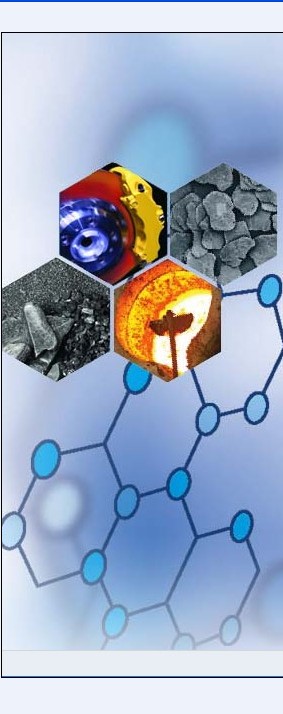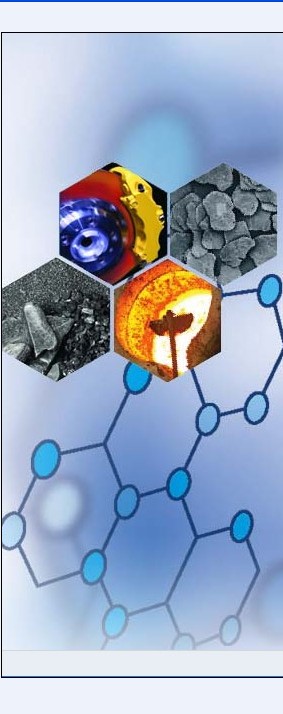Modification of natural graphite for lithium ion batteries
2013-06-09 10:28:07
Modification of natural graphite for lithium ion batteries
Abstract

A process was attempted to improve the performance of natural graphite for lithium ion batteries (LIB). The natural graphite was treated in
a concentrated sulfuric acid solution at high temperature, followed by the coating of resorcinoleformaldehyde resin using in situ polymerization
and heat-treatment over 800
C. SEM, XRD, XPS and Raman spectroscopy were employed to investigate the samples. It was found that the
sharp edges as well as other active sites ‘‘were repaired’’ and the thin pyrolytic carbon film coated on the surface of graphite led to the decrease
of BET surface areas of coated graphite and depressed decomposition of electrolyte and co-intercalation of solvated ions, which led to an im-proved electrochemical performance of modified graphite. In fact, the modified natural graphite reached 90.3% of the initial coulombic effi-ciency, more than 350 mAh g
1
of the reversible capacity and 96.4% of the charge capacity retention reached after 70 cycles. The results
show that the proposed process is a promising and practicable way to improve natural graphite for LIB.
2007 Elsevier Masson SAS. All rights reserved.
1. Introduction
Since being born in the early 1990s, lithium ion batteries
have attracted the attention of many industries (e.g. telecom,
computer, aeronautics & astronautics, etc.) due to their unpar-alleled advantages. Therefore, high increasing velocities of
their output and demands have been holding during the last
decade.
Anode material is crucial for the high performance of lith-ium ion batteries. Though many kinds of anode materials, such
as graphitic carbon, amorphous carbon, nitrides, tin composite
oxides, some novel alloys, composite, and so on, have been
studied so far, graphitic carbon is still the dominating one
available on the market in the present. In current commercial
carbon materials, majority of them have relatively low revers-ible capacities, commonly, about 300e330 mAh g
1
, whereas
some of them take on dissatisfactory cycle performance, such
as natural graphite. 

Owing to different producing area and processing tech-niques, natural graphite differs very much. A number of facto-ries have technically mastered the physical shaping process of
the natural flake graphite and there is little difference in the
main physicochemical properties between their products and
artificial graphite. But when directly used as anode materials
for lithium ion batteries (LIB), these products show some
shortcomings, e.g. poor cycle life, low initial chargee
discharge efficiency, relatively low reversible capacity, and
the like, which seriously limit its application. Therefore, it is
necessary to further improve these products. The graphite
used in our experiment belongs just to one of these products.
Natural graphite, with low potential of Li intercalation and
desirable lamellar structure as well as high capacity
(372 mAh g
1
), should theoretically be a good anode material
for LIB. In addition, natural graphite has very abundant source
or wide availability in countries such as Brazil, Canada, China,
Russia and Sweden. Therefore, for many years, the researches
on modifying natural graphite as anode materials for LIB have
never been halted and a lot of researchers have also obtained
favorable results [1e10]. These results show that oxidizing
natural graphite or coating natural graphite by some water-solubility resins can all improve its electrochemical perfor-mance to some extent, but the improvements cannot still
meet the demand of people and it is very necessary to further
study on modifying natural graphite.
In this study, a novel process is proposed to modify natural
graphite. The process started with the oxidation of natural
graphite by sole concentrated sulfuric acid at high tempera-ture, under the control of the critical reaction condition to pre-vent graphite from excessive inflation, followed by the directly
calcining of as-oxidized-graphite without washing. This not
only utilized high oxidation ability and osmosis of concen-trated sulfuric acid at high temperature so as to modify natural
graphite to a desirable extent, but also confined inflation of the
graphite to the favorable level. Successively, the coating of re-sorcinoleformaldehyde resin on the surface of graphite by in
situ polymerization and carbonization are applied to further
improve the performance of the graphite. The result showed
that the combination of the oxidation and the coating is an ef-fective way to improve the performance of the graphite.
COPYRIGHT 2008-2013 Chenzhou Top Graphite Company Limited
